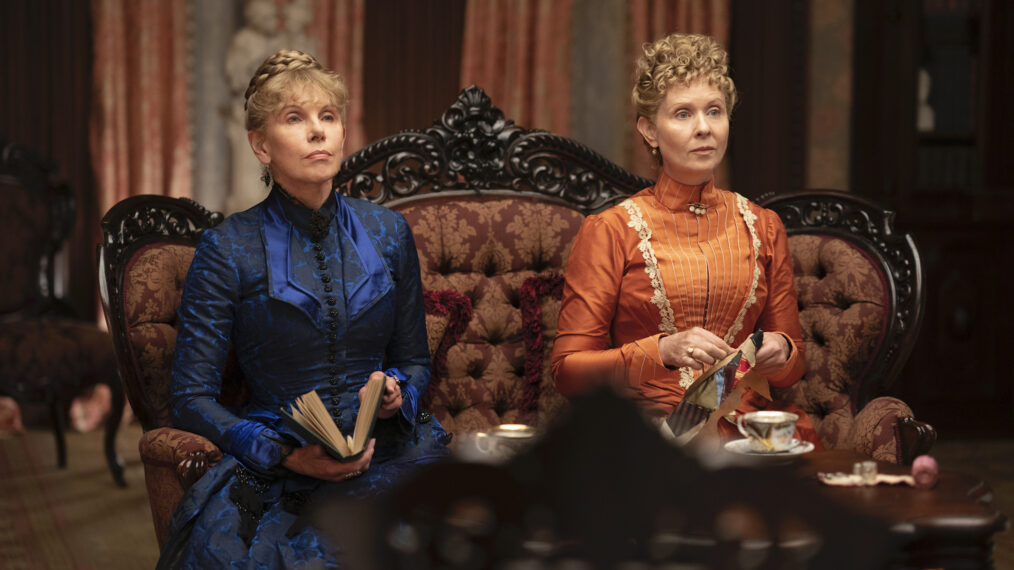#The Evolution of Watching Movies at Home
“#The Evolution of Watching Movies at Home”
In our last installment of Origin Stories, we talked about how Americans watched films outside of movie theaters from the late 1800s to the 1950s. As we continue through history, we’ll see the evolution of watching movies at home that started with television. The changes in how people have viewed movies in the past can also enlighten our current situation and how we may watch movies in the future. To dive back in, let’s take a step back in time.
Television stations saw the opportunity to get many Americans to tune in without having to produce new content by airing older movies. ABC ran a series called Famous Film Festival in the 1950s, which mostly aired British films from the previous decade. While it was short-lived, this started a pattern that other stations began to follow. Studios broke their hesitance to give television stations quality prints of quality movies, but they were still titles from before 1948.
Since movie programs needed to fit a specific time slot, around ninety minutes or less, most films were heavily cut or split into two viewings. Other programs that aired movies included NBC Saturday Night at the Movies and CBS Sunday Night at the Movies, the latter of which was just brought back. These programs remained popular in the 1970s and brought about the prospect of made-for-television movies as well. However, by the 1970s, the time between a film’s initial theatrical release and its ability to air on television grew.
When the videocassette recorder (VCR) was introduced to consumers in 1976, the original threat it posed was against television. Since people could record television shows and watch later, they were less likely to tune into reruns of popular programs. VCRs and VHS (video home system) tapes also changed how people watched movies. In 1977, Andre Blay of the newly created Magnetic Video Corporation came up with the idea of re-releasing movies on video cassettes. Twentieth Century Fox then licensed fifty movies to be released on VHS and the competing format Betamax through MVC, including Patton and The Sound of Music.
As those copies were released, George Atkinson bought one VHS and one Betamax copy of each movie and began renting out the copies through his Los Angeles business Video Station. After purchasing a yearly membership for $50 a year, you could rent movies for $10 a day. The success of Video Station helped make MVC popular, and video rentals became a new way for consumers to watch movies in the comfort of their own homes. Most early video rental stores were independently owned and operated.
A lot of large studios began creating their own home video releases but did not approve of renting movies. Disney was a huge opponent of renting movies since they had created a campaign of releasing one classic film per year on VHS and wanted fans to purchase copies. On these VHS tapes would be printed the words “FOR SALE ONLY – Not intended for Rental.” Disney and other studios filed a lawsuit claiming that video rentals infringed on copyright and made it easier for people to pirate movies. They lost the suit and then tried raising the prices of VHS tapes instead.
However, video rentals continued to become popular through the 1980s, and by 1985, the video rental chain Blockbuster was created. The first store opened in Dallas, Texas, and had 8,000 VHS copies to choose from. Blockbuster owners planned on expanding quickly and obtained large amounts of inventory. This made it possible for them to keep actual rentals on the shelves, whereas other video stores put out empty boxes to prevent theft. The chain grew exponentially by the 1990s and eventually rented the new video format of DVD as well as video games.
One of the downfalls of Blockbuster and other video stores was the amount they charged for late fees on rentals. In 2000, Blockbuster made $800 million in late fees alone. This led to Reed Hastings coming up with a better way to watch movies without owning them. In 1997, he started the DVD-by-mail service Netflix. People could browse their e-commerce website and have movies delivered to their house, and they paid a monthly subscription fee rather than per movie. As video rental stores began to decline in popularity, DVD-by-mail services became more popular. Blockbuster offered to buy Netflix, which turned them down, and so Blockbuster eventually tried out DVD rentals by mail, too.
Another way people were able to watch movies at home was through their cable or satellite television provider. Pay-per-view was available as early as the 1960s when you could call in and pay to watch a sports program on a private channel. By the 1980s, cable networks like HBO, Cinemax, and Showtime offered premium programming, including big movies available a year after theatrical release, with a paid subscription. For more money, you could eventually rent movies closer to their theatrical release dates via pay-per-view and video-on-demand (VOD), the latter eventually making some films available the same day as their theatrical opening.
Later, watching videos online opened up a whole new way to watch movies at home. However, the ability to pirate movies and distribute them also became much easier. Before the internet, it was possible to obtain a copy of a movie on VHS or DVD, copy it, and give it to someone else. DVDs and Blu-rays are encrypted to prevent copying and pirating now, but it was easy to do with VHS. With fast internet arriving for most consumers in the 2000s, people could record a movie in a theater and upload the video online, making it possible for others to download and watch movies without paying anything.
The industry believed that streaming services like Netflix, Hulu, and Amazon Prime would slow the desire for pirating movies online. However, these companies are now focused on producing their own content rather than offering as much of a catalog of older films. The number of movies available on Netflix dropped forty percent between 2010 and 2018 because of their pivot to creating original content. This drives people to find movies in other places. Therefore, television channels and movie studios are now creating their own streaming services for their existing and future content.
With movie theaters temporarily closed due to the coronavirus outbreak, the future of cinemas has never been more uncertain. This isn’t the first time the industry has been threatened by a pandemic. In 1918, theaters closed because of the flu, but there was no other way to watch movies like there is now. Filmmakers and studios are caught with a dilemma: do they postpone movies or release them digitally? Current on-demand options allow you to rent a movie intended for theaters, like The King of Staten Island, for a much higher premium price point.
Releasing a movie on VOD without a theatrical release has had a bad connotation in the past, just as did straight-to-DVD titles previously. Movies that go straight-to-video are implied to be not good enough to draw people to see it in theaters. With streaming services like Netflix and Amazon Prime releasing movies on their platforms exclusively, that connotation has diminished in recent years. Movies like Da 5 Bloods, The Irishman, and The Ballad of Buster Scruggs have legendary directors that would certainly draw people to theaters, yet they were released on Netflix instead.
The question now is whether it is smarter to postpone a movie’s release date in order to ensure a theatrical release or send it straight to VOD. Big studio movies would make more movies in theaters, but for independent films, VOD seems like the better option for now. VOD releases aren’t entirely the last-resort option that studios seem to think they are. Universal’s release of the animated sequel Trolls World Tour on premium VOD brought in more money than the original Trolls movie made in five months in theaters. This shows it’s possible for a movie to make just as much money on VOD as in theaters.
While some people predict audiences will flock to theaters when they reopen, it’s not guaranteed. Until a vaccine is developed, the risk to go to a theater may not be worth it. This is why pushing a theatrical release back, but refusing to consider the VOD option is a huge risk. This virus has proven to be unpredictable in the past few months. As much as Christopher Nolan fans hope the virus will subside enough for them to see Tenet in theaters on July 31st, it still could be pushed back if spikes in infection rates continue to happen around the country.
Theaters have long been the preferred environment for movie watching, but we now have a wealth of options in order to watch movies in the safety of our homes. Major theater chains like AMC have been announcing their plans for reopening in July, but they are wary of requiring too many precautions from patrons that they will keep people from coming back. Of course, there are also people who will refuse to return to theaters if not enough precautions are put in place. The implications of the temporary closing of theaters and their shaky reopening strategies could forever affect how people think about going to movie theaters.
If these past two articles have shown us anything, it’s that the movie-watching experience has been constantly evolving outside of theaters. The venue in which we watch them may change, but the desire to watch movies remains unwavering.
If you want to read more Like this articles, you can visit our Social Media category.
if you want to watch Movies or Tv Shows go to Dizi.BuradaBiliyorum.Com for forums sites go to Forum.BuradaBiliyorum.Com




